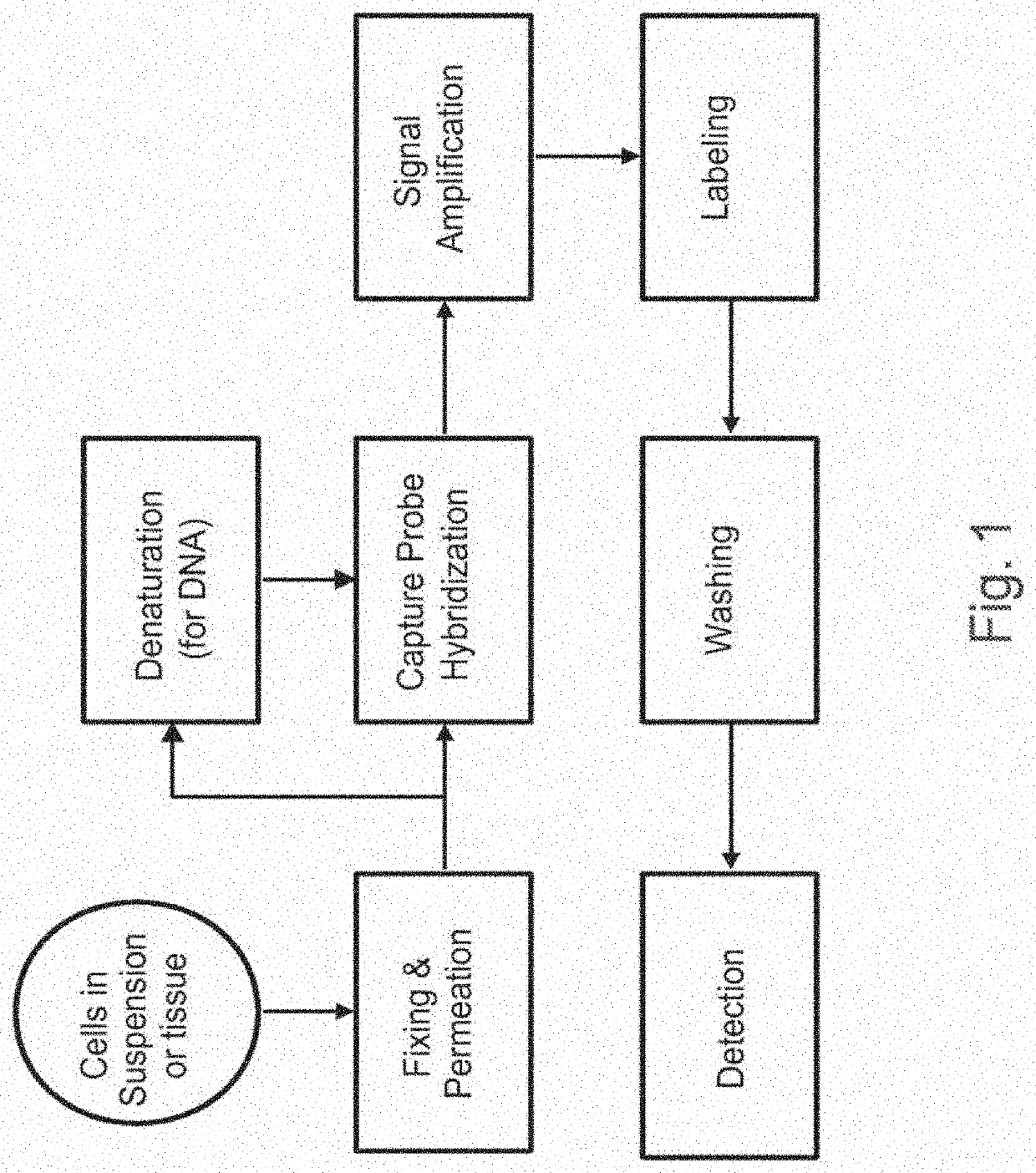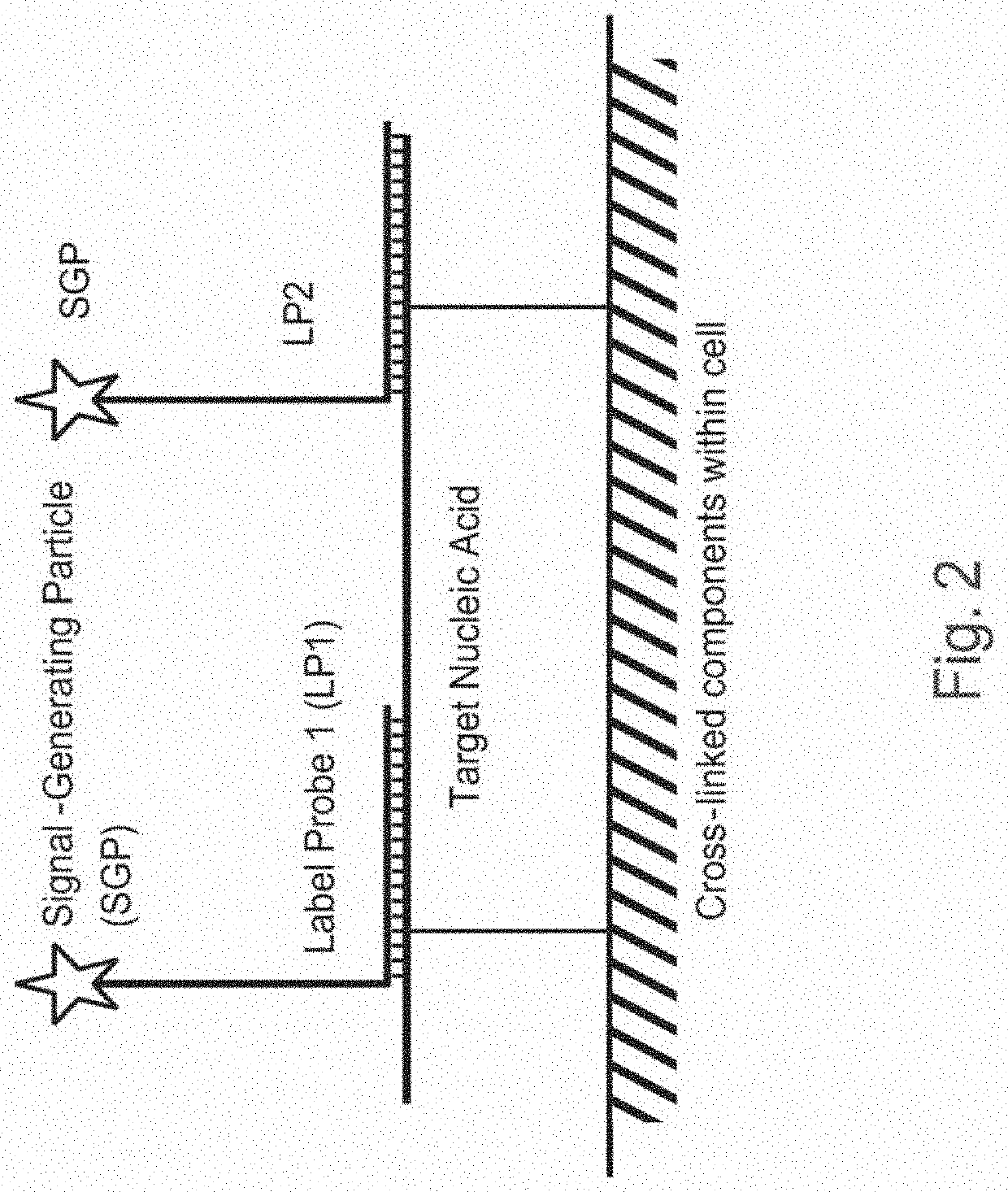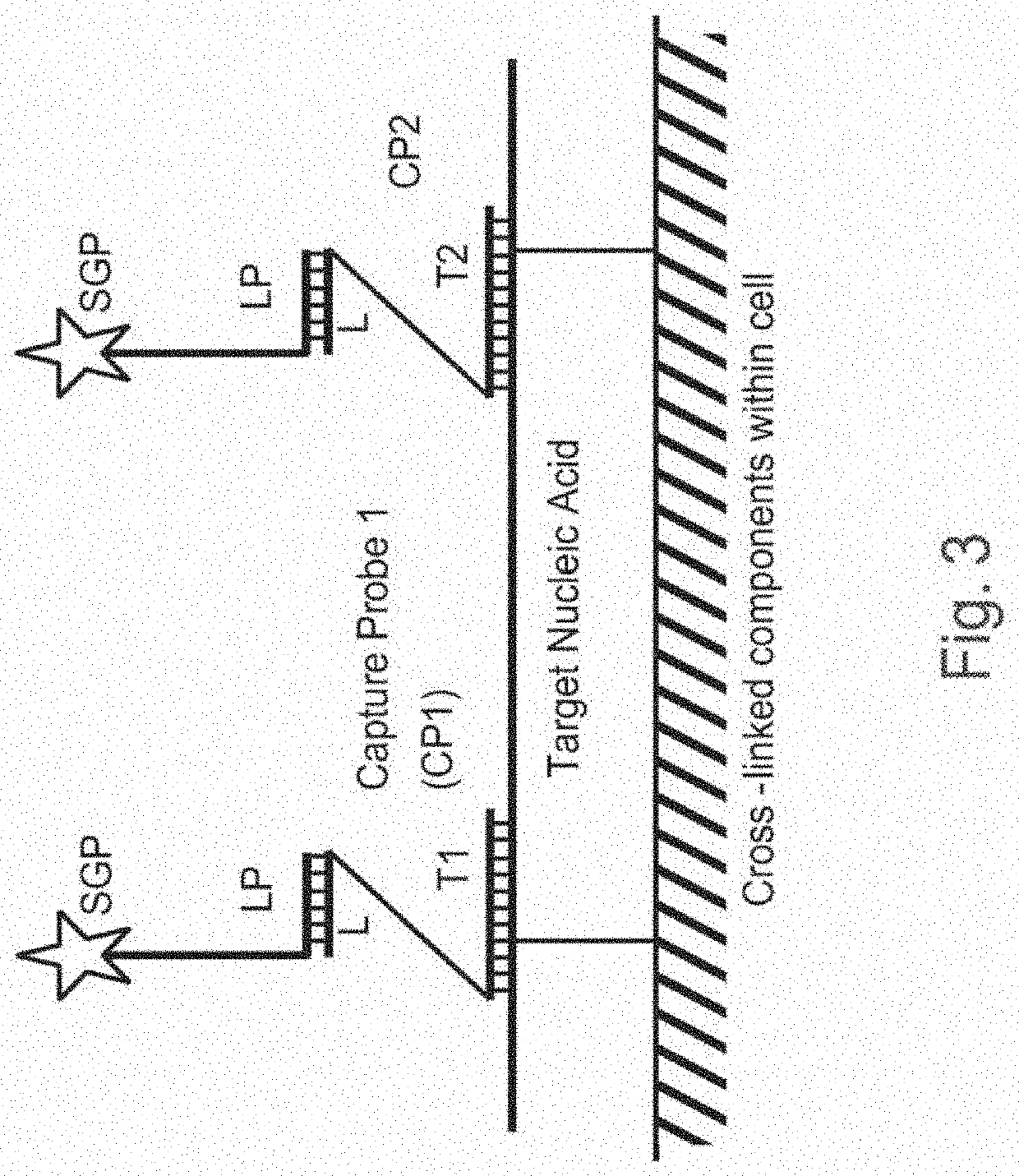Methods of detecting nucleic acid sequences with high specificity
a nucleic acid sequence and high specificity technology, applied in the field of nucleic acid chemistry and biochemical assays, can solve the problems of false positive signals, insufficient binding strength of each capture probe to capture sgp stably, false positive signals, etc., to achieve stronger hybridization interaction, more power to discriminate, and different thermal stability
- Summary
- Abstract
- Description
- Claims
- Application Information
AI Technical Summary
Benefits of technology
Problems solved by technology
Method used
Image
Examples
example 1
of Nucleic Acids in Individual Cells
[0609]The following sets forth a series of experiments that demonstrate in-cell detection of nucleic acid. The results demonstrate, for example, that when staining cells on a glass substrate with QMAGEX, we can obtain a highly specific signal with a sensitivity of detecting a single mRNA molecule. Moreover, we can achieve staining of multiple mRNAs at the same time using a combination of different target probes and amplifiers. These results further demonstrate the feasibility of detecting cancer cells exhibiting transcriptional upregulation within a population of cells with normal gene expression. The results also demonstrate staining of cells in suspension and identification of them using flow cytometry, eliminating need for a solid support for the cells and allowing for rapid detection of stained cells. These results further demonstrate the ability to detect cells exhibiting transcriptional upregulation from those with low basal levels of mRNA e...
example 2
etection of Bcr-Abl Gene Fusion
[0656]To demonstrate the feasibility of detecting RNA fusion transcripts using our assay, we simultaneously hybridized cultured K562 and Jurkat cells with probe sets to BCR and ABL. K562 cells are known to carry the BCR-ABL gene fusion, while Jurkat cell do not. The BCR and ABL probe sets were simultaneously detected with a signal amplification system labeled with a green fluorescent dye and a signal amplification system with a red fluorescent dye, respectively. As shown in FIG. 56, Jurkat cells stained in this manner showed individual green or red dots, indicating the presence of wild type BCR and ABL transcripts. However, as expected K562 cells showed a large number of yellow dots due to the juxtaposition of the BCR and ABL probe sets on the same transcript, indicating that a fusion gene was present. To our knowledge this is the first demonstration of in situ visualization of a fusion transcript.
example 3
[0657]The following sets forth a series of experiments that illustrate label extender design and that demonstrate that a configuration in which the 5′ ends of the label extenders hybridize to a nucleic acid of interest while the 3′ ends of the label extenders hybridize to a preamplifier results in stronger binding of the preamplifier to the nucleic acid than does a cruciform arrangement of the label extenders.
[0658]Two subsets of label extenders were designed to bind to a human GAPD nucleic acid target and to a preamplifier, as schematically illustrated in FIG. 60. Two label extenders bind each copy of the preamplifier. As shown in Panel A, in one subset of label extenders, the two label extenders in each pair bind the preamplifier through the same end (the 5′ end, in this example) and bind the target nucleic acid through the other end (double Z configuration). As shown in Panel B, in the other subset of label extenders, the two label extenders in each pa...
PUM
| Property | Measurement | Unit |
|---|---|---|
| Tm | aaaaa | aaaaa |
| Tm | aaaaa | aaaaa |
| Tm | aaaaa | aaaaa |
Abstract
Description
Claims
Application Information
 Login to View More
Login to View More - R&D
- Intellectual Property
- Life Sciences
- Materials
- Tech Scout
- Unparalleled Data Quality
- Higher Quality Content
- 60% Fewer Hallucinations
Browse by: Latest US Patents, China's latest patents, Technical Efficacy Thesaurus, Application Domain, Technology Topic, Popular Technical Reports.
© 2025 PatSnap. All rights reserved.Legal|Privacy policy|Modern Slavery Act Transparency Statement|Sitemap|About US| Contact US: help@patsnap.com



